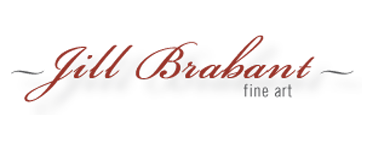Kindergarten Painted Lions
Posted on May 20, 2019

Our kindergarten students had a fun field trip to the National Zoo! In art class we worked on these crayon and tempera cake paintings. We started with a directed drawing with shapes and added a few details with colored crayon to create our lions. In the second art class, we had fun painting the mane with many stripes!
Lesson idea from: http://splishsplashsplatterart.blogspot.com/2012/01/kindergarten-lions.html
A Beautiful Opps!
Posted on May 18, 2019

First graders learned about symmetry and that mistakes are happy accidents and opportunities in art!
Barney Saltzberg’s book Beautiful Opps is a wonderful story that reassures children that mistakes happen and give us a chance to use our art brains (creativity) and each one can be turned into something amazing! The pages of this book are interactive with rips, tears and spills that with a lift of a flap get turned into something beautiful.
We started out by folding a blank piece of paper, opening it up and putting a paint blob on one side. Then we refolded our papers to make a mistake! We discussed how mistakes happen and with a little imagination we can change them into something amazing. We made both sides of our paper look the same by adding other paint blobs. In the second class we colored and cut out our paper to look like butterfly wings, then added the body and pipe cleaner antennae!
White Peony
Posted on May 15, 2019

A little spot of red . . .
The amazing painter, William Merritt Chase, was an Impressionist and one of the Ten American Painters. He often included a spot of red (often his daughter, Alice, wearing red) in his landscape paintings. Chase believed this red note was critical to the success of his compositions.
This beautiful white peony had just a touch of red on the inside of the opening flower and I love how the little red note draws the viewer in.
 White Peony
White Peony
● SOLD (8 x 6 inches, oil on panel)
Color Mix Ladybugs
Posted on May 14, 2019

First grade students learned the important skill of color mixing. On the first day, we talked about primary colors and how these colors can not be made from other colors. We reviewed how to make the secondary colors of green, orange and violet (purple) by mixing two primary colors. Next we set to work on our ladybugs. The body would indicate what secondary color we wanted to create and the wings would indicate the two primary colors that would combine to make that secondary color. We created at least three flowers next to each ladybug with a black sharpie.
On the second day of instruction, the first-grade artists learned how to use a paint palette and how to wash our brush every time we switched colors. (No double dipping!) We practiced mixing our secondary colors and painted the flowers to match and added other details.
Aboriginal Style Paintings
Posted on April 25, 2019

3rd grade artists learned about Aboriginal art. According to Artlandis Aboriginal Art Gallery, the Aboriginal culture dates back as far as between 60,000 to 80,000 years. Ochre and earth tones were used to paint on rocks and there was no written language for Australian Aboriginal People. Stories were passed on through generations by using symbols throughout their artwork. Dot paintings were created using small dots of earth tone paint such as yellow (representing the sun), brown (the soil), red (desert sand) and white (the clouds and the sky). These paintings were mostly images of animals or lakes, and the dreamtime (how the world was created).
Blush
Posted on April 22, 2019

Soft Petals—some of these flowers seemed to blush with the warm tones that I observed in the middle.
The dark background provided polarity to the softness and color of these roses.
 Blush
Blush
Framed Painting: $450 plus Shipping
(10 x 8 inches, oil on panel)
Available for Sale through Paypal
Silberweig Inspired Fish
Posted on April 15, 2019

This lesson idea came from the amazing Cassie Stephens. Taking our inspiration from the artist Sandra Silberweig,we created these fun glittery, pastel fish!
Good Enough to Eat!
Posted on March 16, 2019

 Shown above: Wayne Thiebaud, Dessert Tray, 1992-1994
Shown above: Wayne Thiebaud, Dessert Tray, 1992-1994
4th graders were inspired by Wayne Thiebaud — an American painter who selects everyday items in his graphic, bold and illustrative style. His pastel colors, shadows that enhance form and frosted impasto paint is delicious!
These students pastel on colored paper creations are quite yummy, too!
Sea Turtle Prints
Posted on March 15, 2019

First grade artists had fun making these sea turtle prints. On day one, they created water backgrounds using watercolor paint.
On day two, the students cut scratch foam into a shape of a turtle shell and made patterns with their pencils. These young artists enjoyed rolling out messy ink on the foam plates and making their prints.
On day three, students completed their turtle and sea creature collage.
Plenty of Penguins
Posted on February 9, 2019

Third grade students created these adorable penguin collages.
On the first day we used tempera cakes to create our colorful northern light skies. In the next art class we created our penguins with cut paper, added details and created snow with white paint and q-tips. I’m so proud of these amazing artists!




























